Law Enforcement Guide to Reducing Human Interference with Coastal Nesting Birds
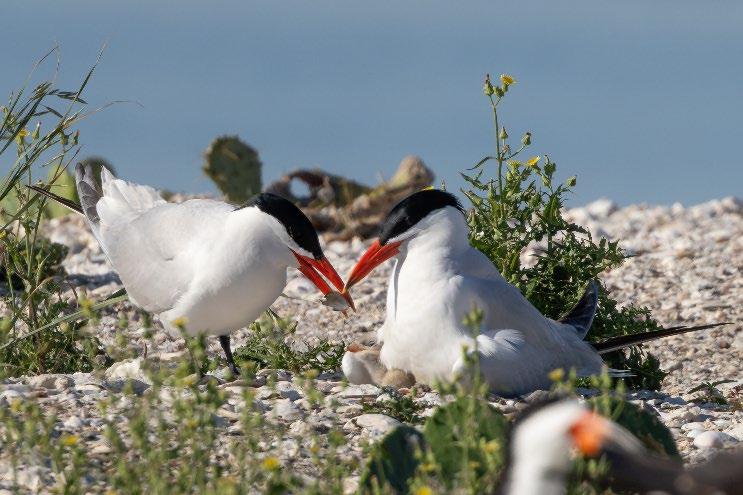
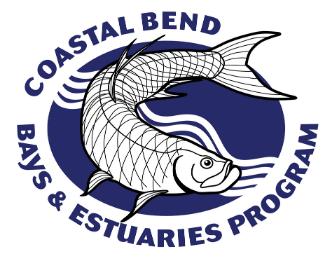

June 2025
INTRODUCTION
The content herein does not necessarily reflect the views or opinions of CBBEP or other organizations that may have provided funding for this project, No. 2542.
This Guide is intended to outline restricted human actions adversely impacting coastal nesting birds in Texas by identifying the laws that protect those birds. The first section discusses migratory bird protections. The second explains the additional protection for birds classified as endangered or threatened. The last section outlines other enforcement measures for human interference with nesting birds such as trespass or uncontrolled dogs. A table at the end identifies Texas coastal nesting birds and the laws that apply to each species.
1. MIGRATORY BIRDS.
For almost all birds it is against federal law to injure or kill a bird or its eggs or take its nest.
1,106 bird species in the U.S. are protected under the Federal Migratory Bird Treaty Act (MBTA):
- The MBTA prohibits taking or killing birds, nests, or eggs “by any means or in any manner.”
- “Take” includes “wound.” 50 C.F.R. § 10.12.
- Hunting licenses allow hunting certain migratory birds during open season. Otherwise, a permit is required to injure or kill these birds or their nests and eggs.
Penalty: A fine of not more than $15,000, a jail term of not more than six months, or both.
Texas law has three categories of birds, although almost all are migratory under federal law:
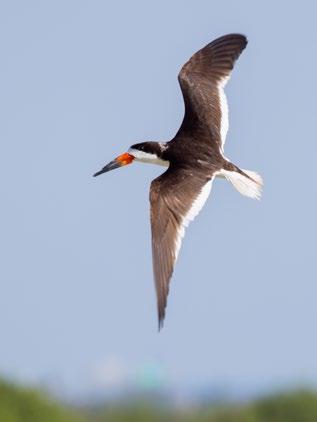
Black Skimmers are severely declining, with 70% of the population lost since the 1980s. Low nesting success is most likely contributing to this decline. Factors include human disturbance, flooding, and predation.
Photo Credit: Liam Wolff, Harte Research Institute
Source: Coastal Bend Bays & Estuaries Program
- Nongame Birds. These two provisions do not apply to shorebirds, which are all defined as game birds. See Game Birds, below.
o Illegal to kill or injure a nongame bird. Tex. Parks & Wild. Code § 64.002(a)(1).
o Illegal to disturb or destroy the nest, eggs, or young of nongame birds. Tex. Parks & Wild. Code § 64.002(a)(3).
Penalty:
o First violation: Class C misdemeanor with a fine of $25 to $500. Tex. Parks & Wild. Code §§ 12.406, 67.005.
o Second violation: Class B misdemeanor with a fine of $200 to $2,000, a jail term of not more than 180 days, or both. Tex Parks & Wild. Code § 12.405.
o All subsequent violations: Class A misdemeanor with a fine of $500 to $4,000, a jail term not to exceed one year, or both. Tex. Parks & Wild. Code § 12.404.
- Game Birds refers to wild birds available for hunting during open season by those with a valid license.
o Includes “wild shore birds of all varieties … wild plover of all varieties, and wild sandhill cranes.” Tex. Parks & Wild. Code § 64.001.
• Note: “wild plover of all varieties” are game birds, but Piping Plovers are protected under federal and state law.
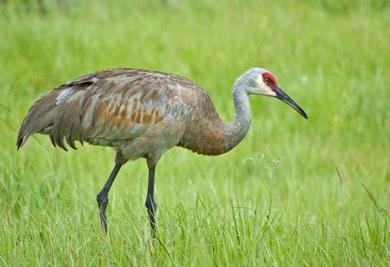
• Note: There is no open season for “any species of shorebird” unless provided. 31 TAC § 65.313(b).
For example, Wilson’s Snipe, a shorebird, has a hunting season.
o Illegal to destroy or take the nest, eggs, or young of any wild game bird or wild bird. Tex. Parks & Wild. Code § 64.003.
• This is less restrictive than Sec. 64.002, which prohibits destroying or disturbing the nest, eggs, or young of nongame birds.
• “Take” is defined as collect, hook, hunt, shoot, or snare. Tex. Parks & Wild. Code § 1.101(5).
This requires greater injury than under the federal definition under the MBTA where “take” includes “wound.” 50 C.F.R. § 10.12.
- Migratory Game Birds include the following coastal birds: wild plovers and shorebirds of all varieties. Tex. Parks & Wild. Code § 64.021.
o Illegal to kill or take the birds, nests, or eggs out of season
• Note: The Outdoor Annual’s “Species Illegal to Hunt: Migratory Game Bird” is incomplete.
Penalty: Class C Parks and Wildlife Code misdemeanor with a fine of $25 to $500. Tex. Parks & Wild. Code §§ 12.406, 64.005.
2. ADDITIONAL PROTECTION for some bird species
A. Federal Endangered Species Act (ESA)
- Illegal to harass, harm, pursue, wound, or kill any bird listed under the ESA.
- Harass means any behavior that is likely to injure wildlife, such as by annoying the bird or eggs so much the bird significantly changes its normal behavior, including breeding, feeding, or sheltering.
- Harm means an act that kills or injures a bird, including significant habitat modification that leads to the bird (or egg) suffering injury or death when essential behavior such as breeding, feeding, or sheltering is impaired.
Penalty:
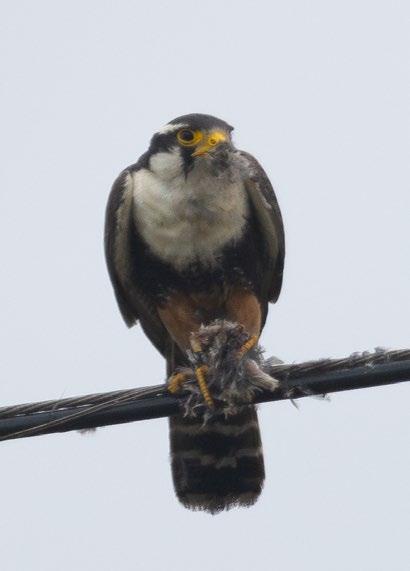
Only one Texas coastal nesting bird is ESA-listed: the Aplomado Falcon (endangered).
Photo Credit: Liam Wolff, Harte Research Institute
o Civil penalty: $1,617 to $63,991, depending on whether the behavior was knowingly done. “Knowingly done” does not mean the violator knew the bird or eggs were protected.
o Criminal penalty: $100,000 or up to 12 months in jail.
B. State law protects birds listed under the federal ESA and those designated as threatened or endangered under state law.
- State-listed coastal nesting birds are Aplomado Falcon (endangered), and Reddish Egret, White-faced Ibis, and Sooty Tern (all threatened). See Table, below.
Penalty:
o First violation: Class C misdemeanor with a fine of $25 to $500. Tex. Parks & Wild. Code § 12.406; Tex. Parks & Wild. Code § 67.005 (threatened); Tex. Parks & Wild. Code § 68.021 (endangered).
o Second violation: Class B misdemeanor with a fine of $200 to $2,000, a jail term of not more than 180 days, or both. Tex. Parks & Wild. Code § 12.405.
o All subsequent violations: Class A misdemeanor with a fine of $500 to $4,000, a jail term not to exceed one year, or both. Tex. Parks & Wild. Code § 12.404.
o Also, the species has a higher wildlife recovery value under 31 TAC § 69.22(b)(7)-(8).
3. BEHAVIOR THAT CAN BE ILLEGAL in connection with nesting birds
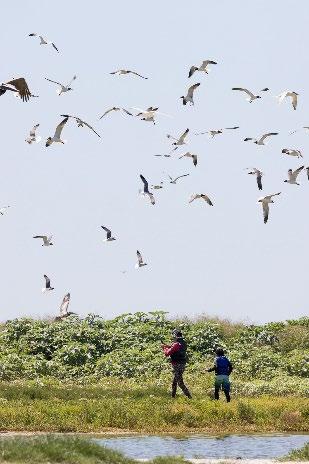
A. Trespass: It is illegal to enter property without consent where posted or otherwise informed. Some coastal islands are private.
Penalty: Fine up to $2,000, a jail term not to exceed 180 days, or both. Tex. Penal Code § 30.05.
• If a deadly weapon is carried, fine up to $4,000. Tex. Penal Code § 12.21.
B. Animal control: Some coastal municipalities expand protection for coastal nesting birds by prohibiting dogs from disturbing nesting birds.
Corpus Christi:
Dogs must be “under restraint” on Gulf beaches – either on a leash or subject to the commands of its human – keeping “the dog from harassing, threatening, biting, or attacking any other animal or person” (italics and emphasis added). It is illegal to allow a dog to attack or threaten an animal on a public beach. Corpus Christi Code of Ord. § 10-59 (a),(b).
• Penalty: Violation with a fine of no more than $500. Corpus Christi Code of Ord. § 1-6(e).
Rockport:
Dogs cannot be running at large. Rockport Code of Ord. § 18-27.
• Penalty: Misdemeanor with a fine not to exceed $200. Rockport Code of Ord. § 18-28. The dog does not need to be impounded if its owner is known. Rockport Code of Ord. § 18-33.
Port Aransas:
It is illegal for a person to allow their dog to run at large on city beaches or public grounds. Port Aransas defines “at large” to refer to dogs not restrained by a leash of 10 feet or less. Port Aransas Code of Ord. § 4-26.
• Penalty: The dog may be impounded; fine between $10 and $200. § 4-101.
It is illegal to injure or harm wildlife in Port Aransas parks. Port Aransas Code of Ord. § 18-242(10).
All pets must be on a leash in Port Aransas parks. Port Aransas Code of Ord. § 18-242(3).
• Penalty: Class C misdemeanor. Port Aransas Code of Ord. § 18-240(a).

